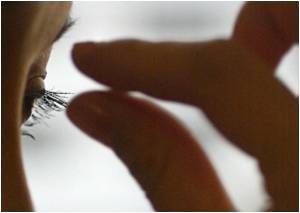
More than 147,000 children were screened between 2000 and 2009 in this collaboration of the KidSight program, medical director William E. Scott, MD, of the University of Iowa, Department of Ophthalmology and Visual Sciences, and the Iowa Lions Clubs. Photoscreening technology was used because earlier studies indicated problems with using eye charts to screen children younger than age 3 and children with disabilities. This study used the Medical Technology, Inc. (MTI) PhotoScreener, which records the pattern of light reflected through each of the child’s pupils as the child’s eyes are photographed. Other studies of normal and high-risk children found the MTI effective for screening for amblyopic risk factors, which include: unequal visual acuity between the two eyes (anisometropia), high nearsightedness, high farsightedness, astigmatism, and strabismus (eye turned inward or outward).
Trained Lions Club volunteers conducted the free screenings at state-registered childcare centers, Head Start Programs, and state-sponsored clinics, as well as libraries, churches and children’s fairs. Photoscreened images were then assessed by a trained reader (the same person throughout the study) at the University of Iowa, and children with abnormal results were referred to ophthalmologists or optometrists for thorough eye exams. A part-time coordinator worked with parents to ensure that referred children kept their follow-up appointments.
About 4 percent of children screened needed follow-up for possible amblyopia, which corresponds to the expected rate of the disorder in the general population. More than 95 percent of the nearly 148,000 children in the study received a reliable screening result, and follow-up was successful for more than 80 percent of those referred for further testing.
"This program has had a lasting, beneficial impact on the children of Iowa, and seems to be cost-effective as well," Dr. Scott said. "Here’s what made it successful: a ready supply of volunteers who were easily trained to screen large numbers of children at low cost; an appropriate, sensitive, reliable screening method (photoscreening) that required little training; quality control methods; referral relationships with eye care professionals; and effective follow-up with referred families."
Amblyopia is usually treated with special eyeglasses, patching of the stronger eye, medications, or a combination of approaches.
Advertisement
Source-Eurekalert









